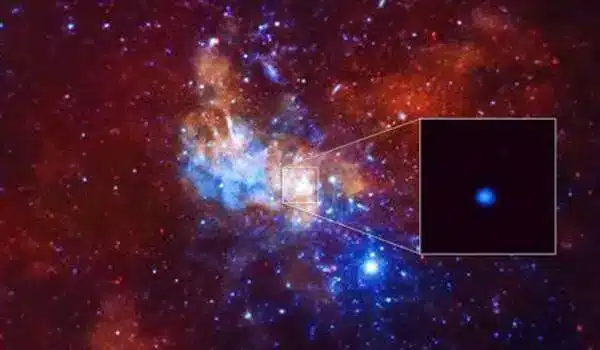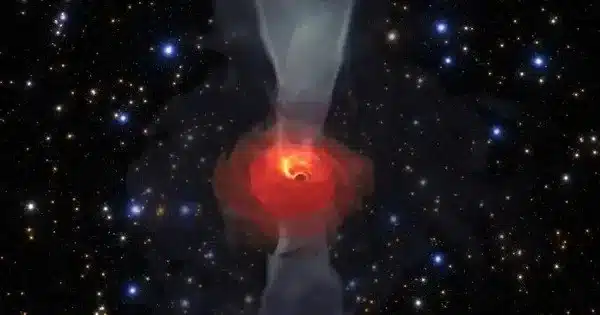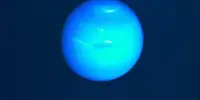Supermassive black holes are often found at the galactic core and can be millions or even billions of times more massive than our Sun. Because black holes do not emit light on their own, they are difficult to investigate directly. Astronomers have discovered a remarkable relationship between the amount of dust surrounding a supermassive black hole and the power of radio radiation emitted in exceptionally luminous galaxies. The findings were reported in the Royal Astronomical Society’s Monthly Notices.
The international team of astronomers, led by Newcastle University and Durham University in the United Kingdom, used new data from the Dark Energy Spectroscopic Instrument (DESI), which is conducting a five-year survey of large-scale structures in the universe, including optical spectra for 3 million quasars, which are extremely bright galaxies powered by supermassive black holes. They discovered that quasars with more dust, which seemed redder, were more likely to have stronger radio emission than quasars with little to no dust, which appeared blue.
Almost every known galaxy, including our own Milky Way, has a supermassive black hole at its center, which is a black hole with a mass millions to billions of times that of our Sun. There is a lot of material in the center of some galaxies, feeding and developing this supermassive black hole, making it incredibly energetic and “active.”
The most powerful of these active galaxies are known as “quasars,” and they are among the brightest things in the Universe. The brilliant disc of matter that orbits and feeds the center supermassive black hole at optical and ultraviolet wavelengths causes most quasars to seem very blue. However, astronomers have found that a significant fraction of these quasars appear very red, although the nature of these objects is still not well understood.
It was really exciting to see the amazing quality of the DESI data and to discover thousands of these, previously rare, red quasars. I feel like this study puts lots of the puzzle pieces together in our understanding of red quasars and definitively links the dust in a quasar to its radio emission.
Dr Fawcett
To comprehend the physics of these red quasars, “spectroscopic” measurements are required, which can be used to analyze the quasar light at various wavelengths. The “shape” of the quasar’s spectrum can indicate the quantity of dust present in the surrounding region. Observing the radio emission from quasars can also reveal information about the central supermassive black hole’s energetics, such as whether it is launching powerful “winds” or “jets” that may affect the surrounding galaxy.
This new work, lead by Dr. Victoria Fawcett of Newcastle University (formerly Durham University), uses spectroscopic measurements from DESI to assess the quantity of dust (reddening) in a sample of 35,000 quasars and link it to the measured radio emission. They find that DESI is capable of observing much more extreme red (dusty) quasars compared to similar/previous spectroscopic surveys, such as the Sloan Digital Sky Survey (SDSS). They also find that redder quasars are much more likely to have strong radio emissions compared to typical blue quasars.

Dr Fawcett says: “It was really exciting to see the amazing quality of the DESI data and to discover thousands of these, previously rare, red quasars. I feel like this study puts lots of the puzzle pieces together in our understanding of red quasars and definitively links the dust in a quasar to its radio emission. I think this is the strongest evidence so far that red quasars are a key element in how galaxies evolve.”
This link between reddening and radio emission is most likely caused by enormous jets of gas forced away from the supermassive black hole, which bang into the surrounding dust, creating shocks and radio emission. These outflows will eventually blast away all of the dust and gas in the galaxy’s core, revealing a blue quasar and causing decreased radio emission. This fits with the developing theory that red quasars constitute a younger, “blow-out” phase in galaxies’ evolution. Red quasars may thus be crucial for understanding how galaxies evolve over time.
“There are still many unanswered questions surrounding red quasars, such as whether black hole winds or radio jets are ultimately responsible for this enhanced radio emission,” Dr. Fawcett says. However, with the survey’s sample of DESI red quasars growing over the next few years, I am convinced that we are on the verge of fully understanding the nature of these red quasars.”















